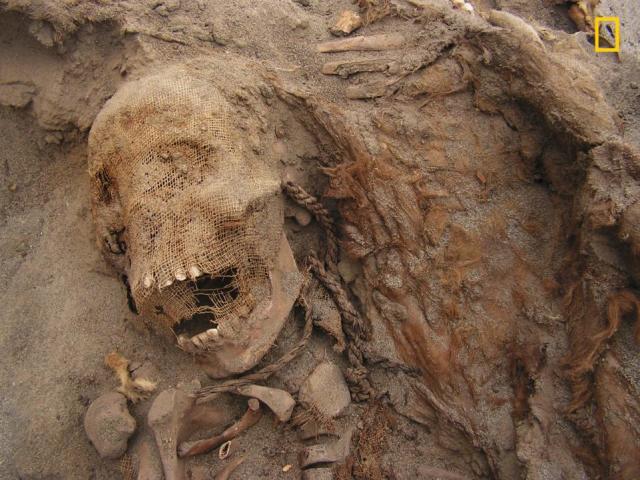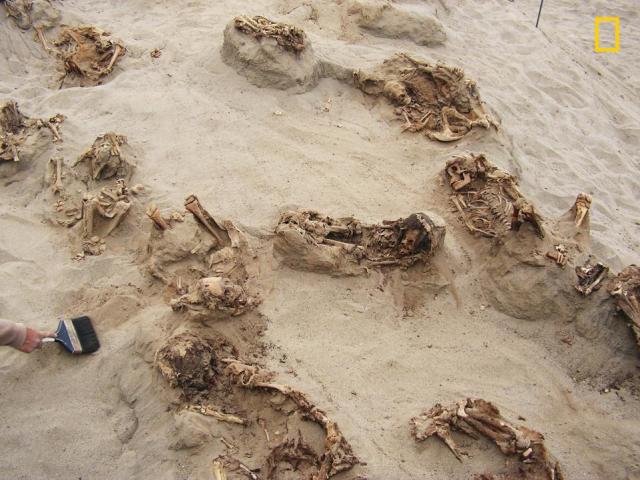Remains of 140 Children Who Had Their Hearts Ripped Out Suggests Largest Child Sacrifice Event in History
Over the course of three years, archaeologists in Peru uncovered the graves of 140 children, all killed by a swift cut to their chest, presumably to rip out their hearts. The massive gravesite is shedding light on the mysterious ancient Chimú Empire, and raises question on what could have driven these people to do such a heinous act.
The accidental discovery of child skeletons on a site formerly known as Huanchaquito-Las Llamas was first made in 2011, but it wasn’t until 2014 that archaeologists were able to gain sufficient funding in order to conduct a proper excavation. Now, several years and many hours of manual digging later, the excavation team uncovered the remains of 140 children and 200 young llamas. Although the study on the findings has not yet been published, the researchers involved explained their work in a National Geographicexclusive published on Thursday.
Related: Ancient Peru: Dozens Of Tombs Reveal Child Sacrifices And Hoards Of Archaeological Treasures
The children are reported to have all been between five and 14 at the time of death, although the majority of the children were between eight and 12 at the time of their alleged sacrifice. The llamas were all less than 18 months old at their time of death.
According to National Geographic, the site is evidence of the single largest child sacrifice event in the Americas, and could possibly be the largest event of this kind in world history.
Carbon-dating of nearby items put the time of death between 1400 and 1450, which would make this a rare glimpse into the customs of pre-Columbian cultures in South America. In addition, both the human and llama remains had evidence of cut marks on their sternum, as well as dislocated ribs. This suggests that the cause of death may have been a swift cut to the chest followed by removal of the heart.
Related: Ancient Greece: “Shocking” Dismembered Human Skull Reveals Long-Debated Ritual Sacrifice Of Virgins
Further analysis revealed the sacrificed children may not have originated from the site of their sacrifice, but were likely brought from the outer regions of the Chimu Empire. Study co-author John Verano, a professor of anthropology at Tulane University told Newsweekthat evidence of skull deformation was a major indication of where some of these children may have been born.
“Their heads were shaped in infancy as cultural identity markers. Also their diet looks quite variable, as determined by stable isotopes of Carbon and Nitrogen,” said Verano, explaining how they determined where there children may have been born.
As for why the sacrifice took place, that still remains unclear. Evidence in the mud from the site suggest the sacrifices may have occurred during a period of serious flooding. The flooding could have disrupted fishing in the area and brought extreme hardship to the people.
Haagen Klaus, a professor of anthropology at George Mason University, who was not associated with the research, told National Geographic that the point of sacrifices is to give up something that is of the utmost importance. When adult sacrifices failed to bring a desired outcome, out of desperation the people may have turned to their most precious belongings; their children. As for the llama sacrifices, Verano explained that these are an extremely important animal in both ancient and present cultures in Peru and Bolivia.
“After humans, llamas were considered to be the most valuable offerings to the gods,” said Verano.
We may never know for sure what drove these people to brutally kill so many children, but ongoing research such as this helps reveal the culture of the ancient world.


No comments: